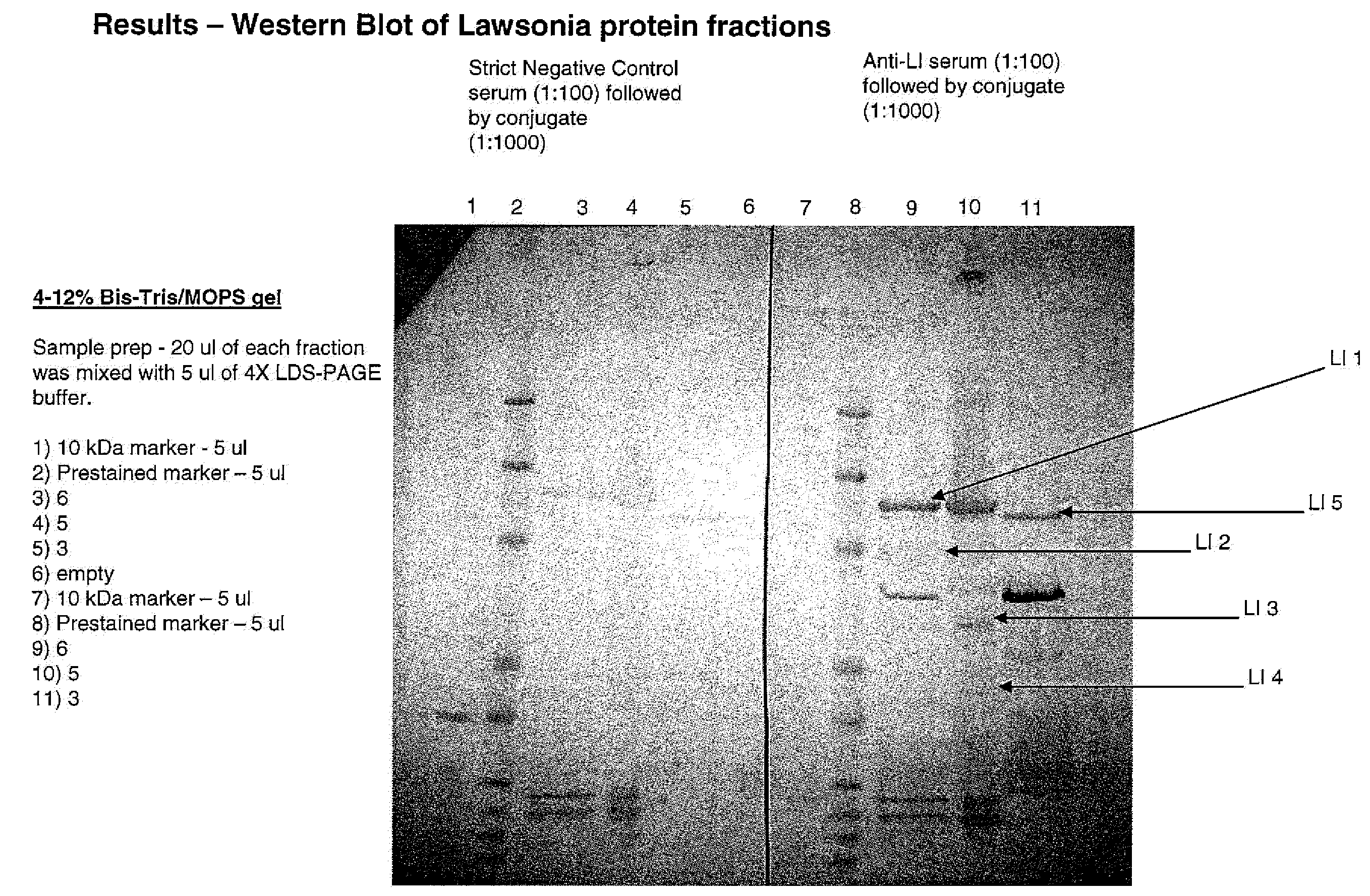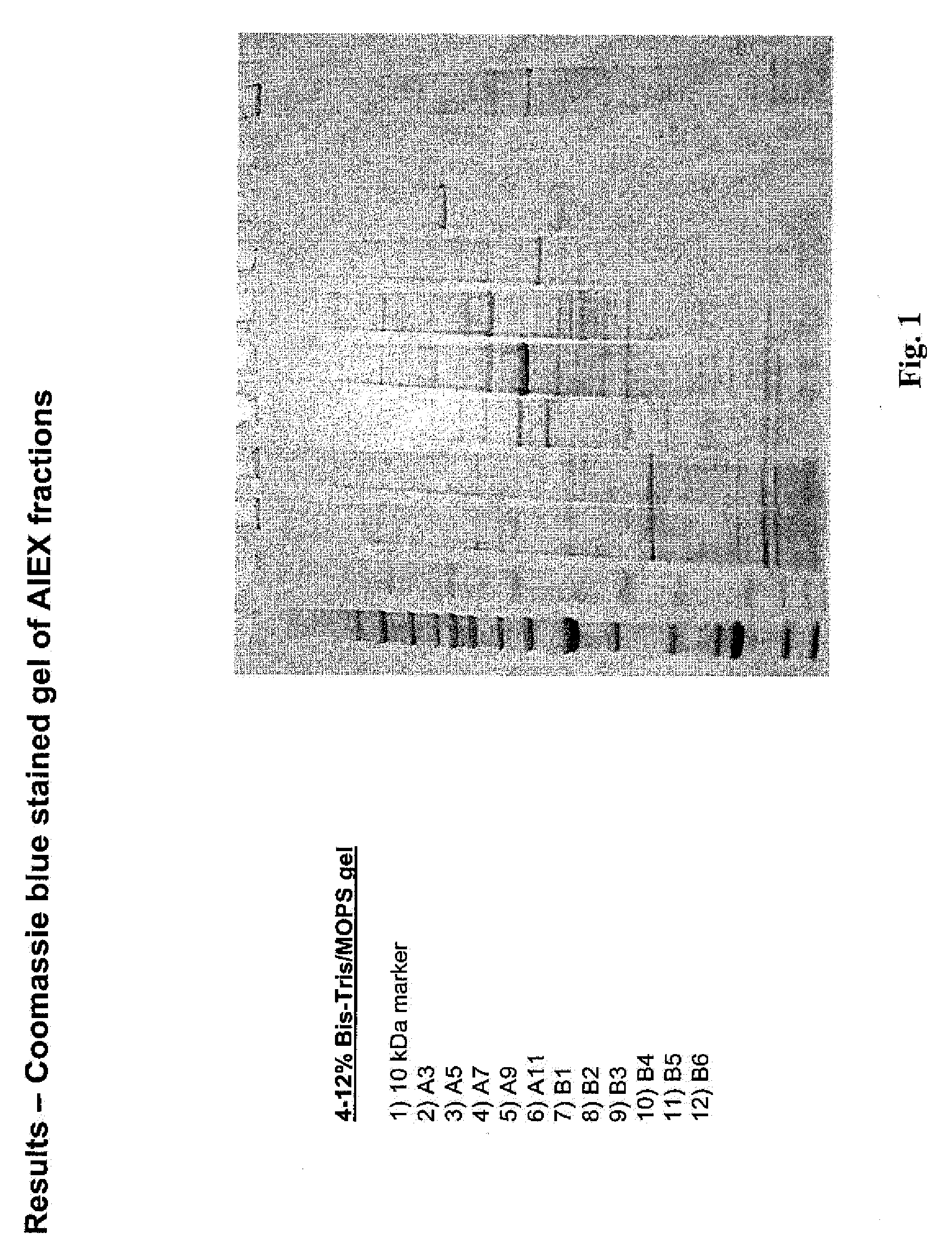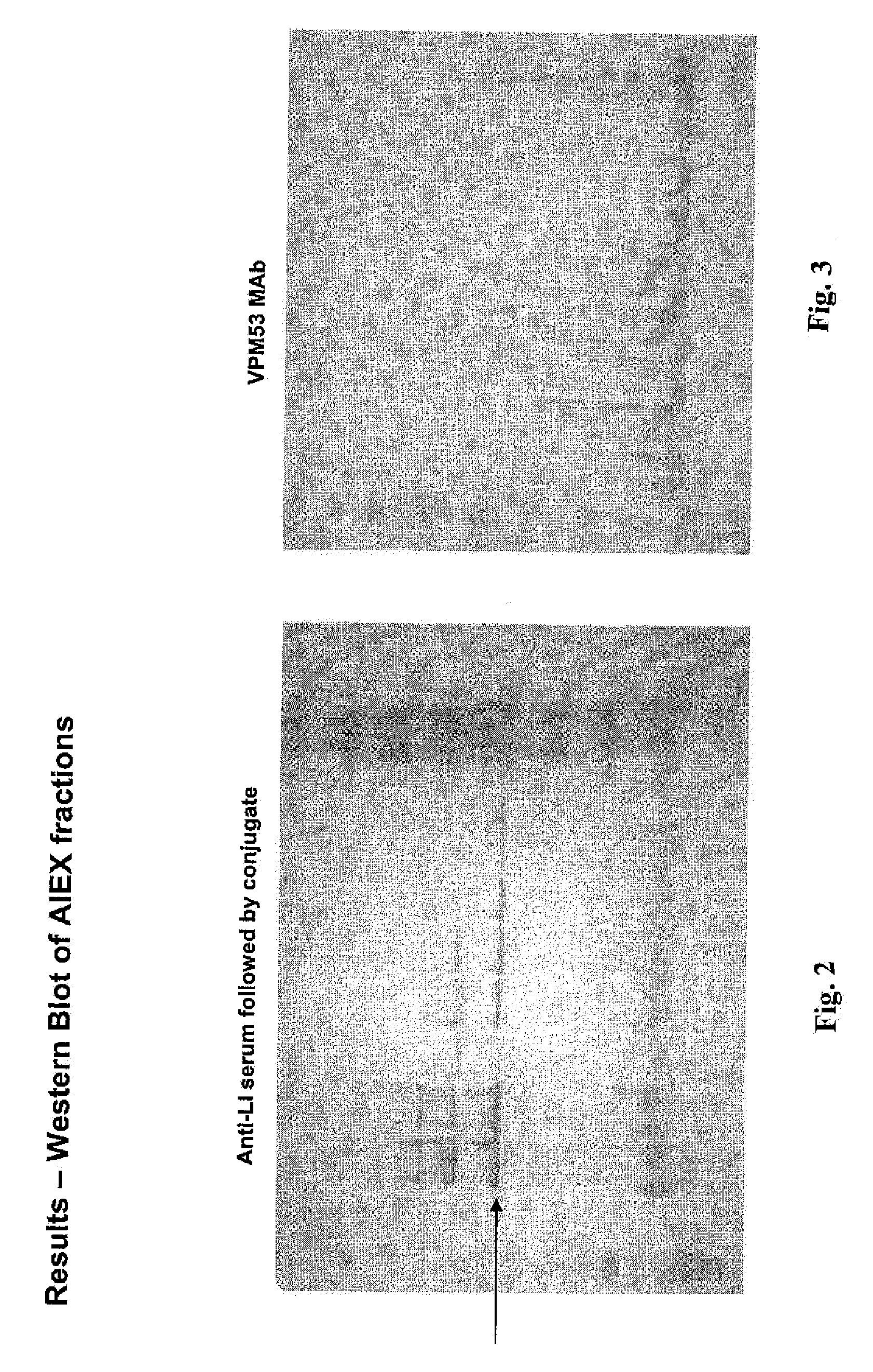Lawsonia protein useful as a component in subunit vaccine and methods of making and using thereof
a technology of intracellularis and protein, which is applied in the field of intracellularis, can solve the problems of swine herd loss and particularly great cause of intracellularis loss, and achieve the effect of reducing clinical severity and enhancing resistance to new infections
- Summary
- Abstract
- Description
- Claims
- Application Information
AI Technical Summary
Benefits of technology
Problems solved by technology
Method used
Image
Examples
example 1
[0040]This example describes the isolation and sequencing of the protein of the present invention.
Anionic Exchange Separation
[0041]In order to separate proteins from Lawsonia intracellularis (“Lawsonia”), Lawsonia was first grown under standard conditions in a container having 1 L volume using McCoy cells. The extracellular Lawsonia cells were harvested by first filtering the culture through a 5 micron filter in order to remove the McCoy cells and other cell debris. This was then followed by centrifugation sufficient to pellet the bacteria. The supernatant was discarded and the pellet was then washed with in PBS to remove residual media components. After washing, the pellet primarily contained Lawsonia cells. This final preparation of cells was then dissolved in 2 mL solution of 50 mM Tris buffer (pH 8.0), 5 mM 2-mercaptoethanol (“2-ME”), and 8M urea buffer. After extraction for approximately 30 minutes, the mixture was centrifuged for 10 minutes at 20,000×g in order to remove urea-...
example 2
[0045]This example describes the isolation and sequencing of a three other proteins of the present invention. Extracellular Lawsonia cells were prepared by filtering the culture through a five μm filter and centrifuging under conditions sufficient to pellet the bacteria. The resulting pellet was suspended in buffer A, which comprised 2.5 ml of 50 mM sodium phosphate, 0.5 M NaCl, and 5 mM 2-ME, at a ph of 7.4). The cells were disrupted through sonication before being subjected to three freeze / thaw three cycles, each comprising one minute pulses with 0.5 second duty cycles for a total often minutes. The sonication step was repeated once more for about five minutes and the resultant mixture (the whole cell lysate) was frozen and stored at −85° C. until it was removed for use. To fractionate the proteins from the whole cell lysate, the lysate was thawed and then transferred to two eppe tubes that were centrifuged for five minutes at 20,000×g at 4° C. this produced a first supernate and ...
example 3
[0049]This example provides sub-sequences or SEQ ID Nos. 1 and 3 that are immunologically relevant and can be used to illicit an immune response against Lawsonia Intracellularis, thereby providing an animal susceptible to Lawsonia Intracellularis infection protective immunity, as well as a lessening of the clinical symptoms associated with infection from Lawsonia Intracellularis.
[0050]SEQ ID Nos. 1 and 3 were analyzed for potential epitopes using a SVM and ANN-based CTL epitope prediction tool, as described in Vaccine, 2004 Aug. 13; 22 (23-24): 3195-204, Prediction of CTL Epitopes using QM, SVM, and ANN Techniques, Bhasin M, and Raghava G P, Institute of Microbial Technology, Sector 39A, Chandigarh, India, the teachings and contents of which are incorporated by reference. SEQ ID No. 1 contained 1 epitope, which had a score (ANN / SVM) of 0.82 / −0.063950275. This sequence is provided herein as SEQ ID No. 2. SEQ ID No. 3 contained four epitopes, SEQ ID No. 4, which had a score of 0.91 / 0...
PUM
| Property | Measurement | Unit |
|---|---|---|
| Nucleic acid sequence | aaaaa | aaaaa |
Abstract
Description
Claims
Application Information
 Login to View More
Login to View More - R&D
- Intellectual Property
- Life Sciences
- Materials
- Tech Scout
- Unparalleled Data Quality
- Higher Quality Content
- 60% Fewer Hallucinations
Browse by: Latest US Patents, China's latest patents, Technical Efficacy Thesaurus, Application Domain, Technology Topic, Popular Technical Reports.
© 2025 PatSnap. All rights reserved.Legal|Privacy policy|Modern Slavery Act Transparency Statement|Sitemap|About US| Contact US: help@patsnap.com



